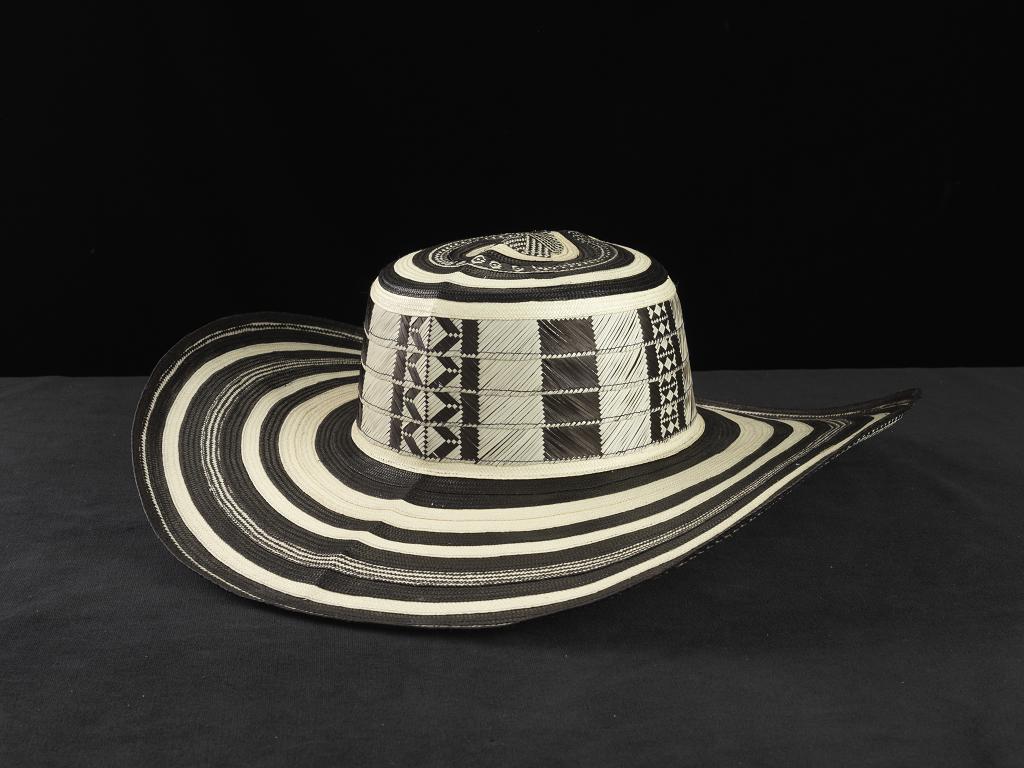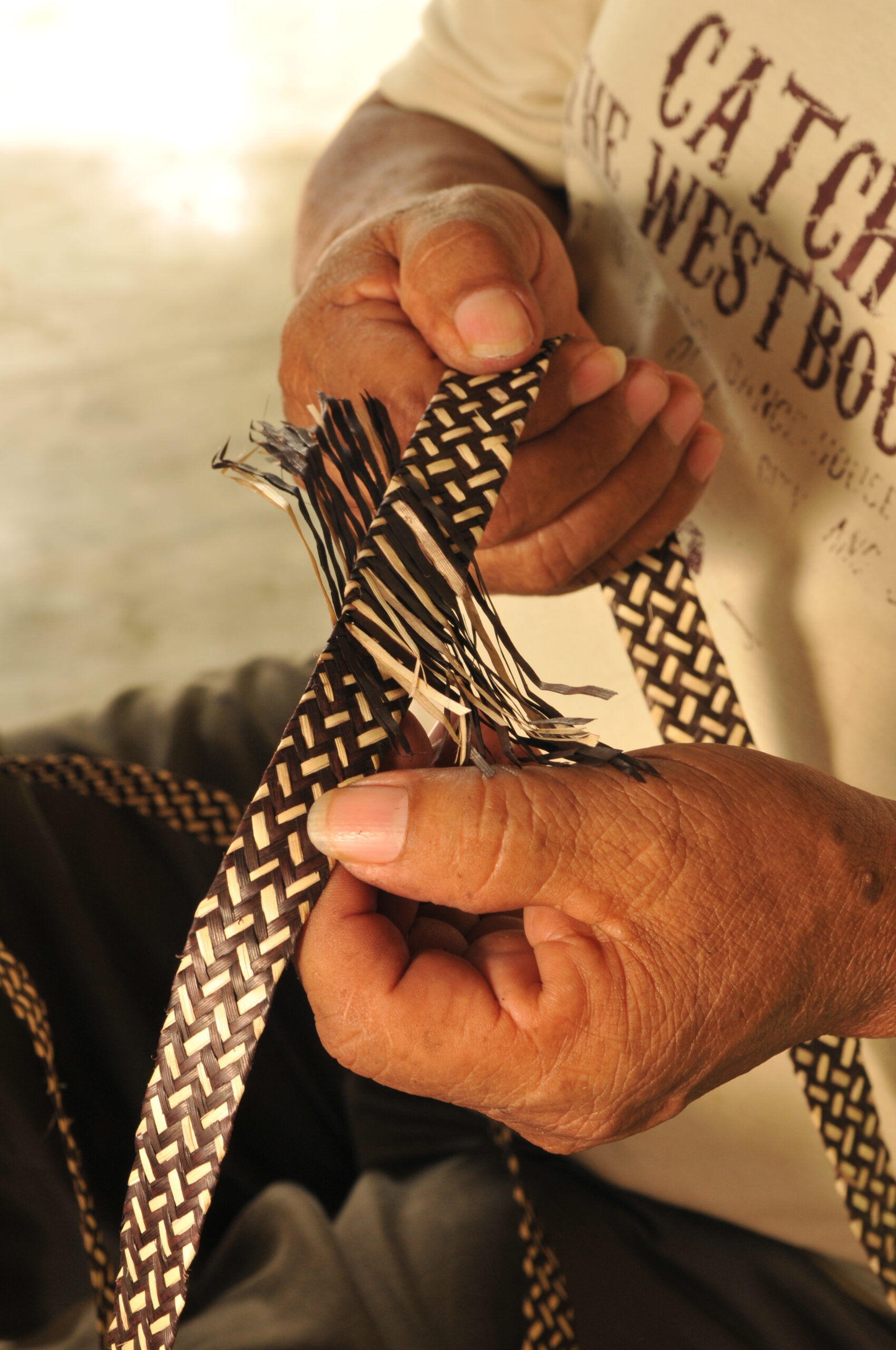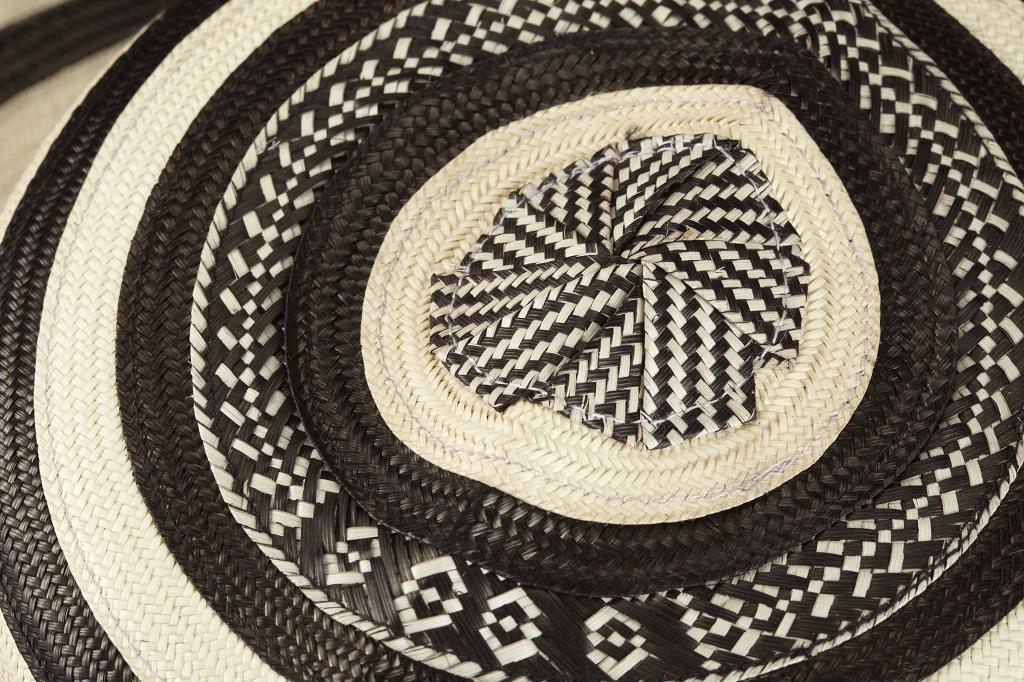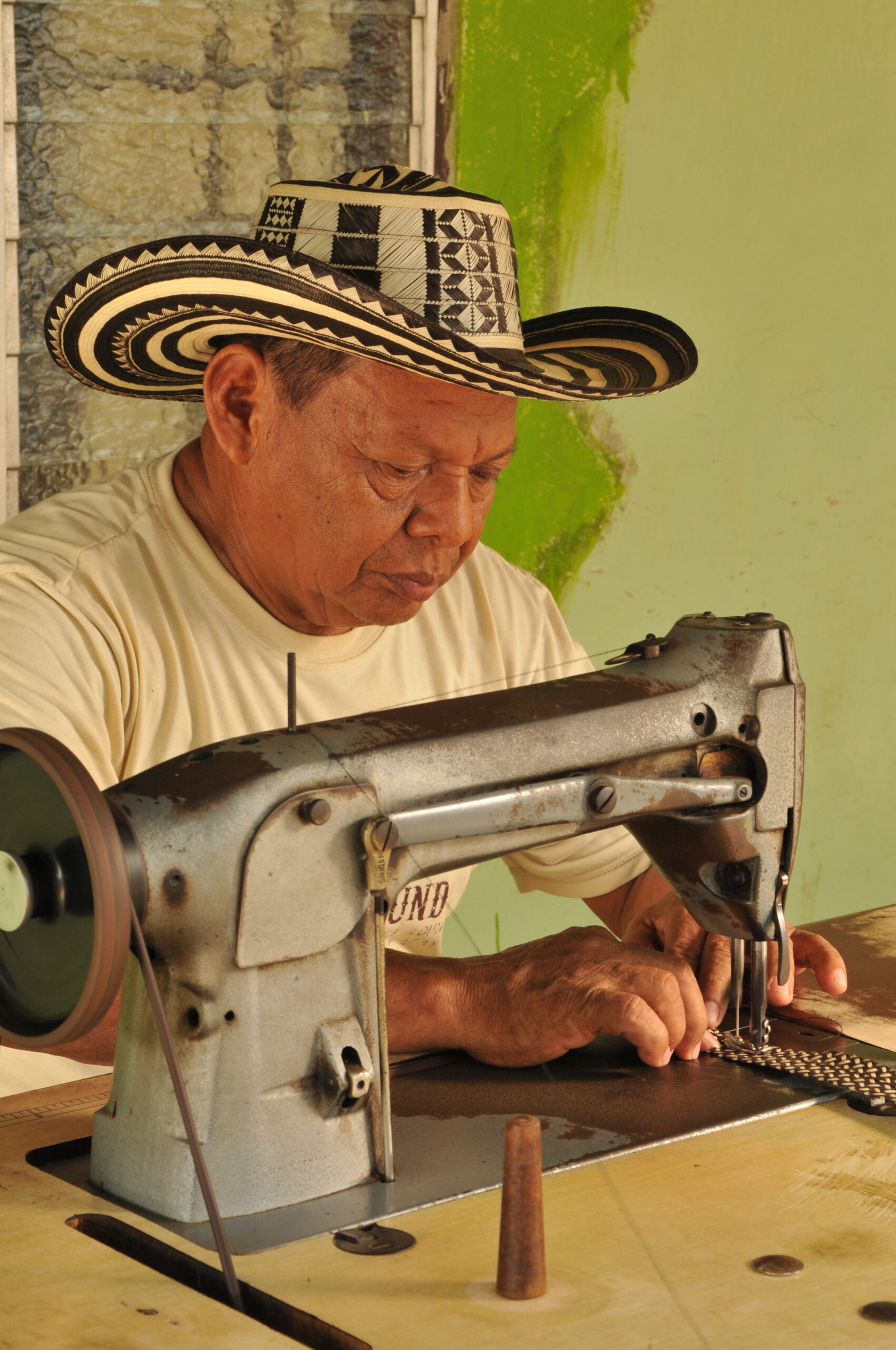Description
Wl sombrero “vueltiao” ha dado la vuelta al mundo y es símbolo de identidad cultural colombiana. Su origen se remonta a los asentamientos de la cultura Zenú, antes de la llegada de los conquistadores. La caña flecha “Gynerium sagittatum”, material con el que se teje el sombrero vueltiao, se extrae de una palma nativa de la región.
El proceso de la cadena productiva es el siguiente: siembra, a los seis meses se cortan las hojas, se raspa la nervadura hasta que quede limpia y se separan las hojas para obtener las fibras con las que se va a tejer, se deja secar al sol, se seleccionan las tiras para darles el color deseado.
Para obtener el color negro se introducen en barro rico en sustancias alcalinas como jagua, o bija durante tres días. Se cocinan tres veces hasta obtener el característico color negro.
Las restantes se cocinan con cogollos de caña agria y se dejan secar al sol, lo que les da el color blanco.
Las mujeres son las que tejen la trenza, los motivos conocidos como “pintas ” simbolizan elementos de la naturaleza como animales, plantas y flores que tienen nombres pintorescos para describir los diseños: flor de cocorilla: corazón de abanico; granito de arroz o la cocá.
El tejido de la trenza se realiza con un número impar de hebras, desde once hasta veintisiete, lo que determina la finura del sombrero. Los hombres se encargan de la costura de las trenzas en máquinas de coser, para lo que se requiere gran destreza y conocimiento de los diseños o patrones.
Actualmente los productos se han diversificado y hoy se consiguen alfombras y tapetes; individuales; bolsos y maletines; billeteras y carteras y muebles tapizados en caña flecha. El sombrero ha sido utilizado por presidentes, deportistas y celebridades que lo han hecho conocer en el mundo entero. Los productos de caña flecha tienen gran acogida en los mercados nacionales e internacionales y generan importantes ingresos para aproximadamente 9.000 personas dedicadas al oficio en los departamentos de Córdoba y Sucre.
Ana Lucía Talaigua y su esposo Marcial Montalvo tienen una empresa familiar, enseñaron el oficio a sus hijos, así como ellos lo aprendieron de sus mayores. Marcial ha sido líder en su comunidad y promotor de la divulgación del oficio, ha recibido varios reconocimientos y ha sido invitado a eventos internacionales, siempre como embajador y orgulloso representante de su cultura y sus tradiciones.
Bibliografìa
Duque, Duque, C. Maestros del Arte Popular Colombiano – Suramericana. Editorial: Panamericana (2010).
Artesanías de Colombia. Censo Económico Nacional, Sector Artesanal. 1998.
English
Caña Flecha Weaving
The “vueltiao” hat has travelled around the world and is a symbol of Colombian cultural identity. Its origin goes back to the settlements of the Zenú culture, before the arrival of the conquistadors. The “Gynerium sagittatum” arrow cane, the material from which the vueltiao hat is woven, is extracted from a palm tree native to the region.
The process of the production chain is as follows: sowing, then after six months the leaves are cut, the veins are scraped until they are clean and the leaves are separated to obtain the fibres with which they will be woven, they are left to dry in the sun, the strips are selected to give them the desired colour. To obtain the black colour, they are placed in mud rich in alkaline substances such as jagua or bija for three days. They are cooked three times until the characteristic black colour is obtained. The remaining ones are cooked with sour cane buds and left to dry in the sun, which gives them a white colour.
The women are the ones who weave the braid, the motifs known as ‘pintas’ symbolise elements of nature such as animals, plants and flowers which have picturesque names to describe the designs: cocorilla flower: fan heart; rice granite or the cocá. The weaving of the braid is done with an odd number of strands, from eleven to twenty-seven, which determines the fineness of the hat. The men are responsible for sewing the braids on sewing machines, which requires great skill and knowledge of the designs or patterns.
Nowadays, the products have diversified and today you can find carpets and rugs; placemats; handbags and briefcases; wallets and purses; and furniture upholstered in caña flecha. The hat has been used by presidents, sportsmen and celebrities who have made it known all over the world. Caña flecha products are well received in national and international markets and generate important income for approximately 9,000 people dedicated to the craft in the departments of Córdoba and Sucre.
Ana Lucía Talaigua and her husband Marcial Montalvo have a family business, they taught the trade to their children, just as they learned it from their elders. Marcial has been a leader in his community and a promoter of the dissemination of the craft, he has received several awards and has been invited to international events, always as an ambassador and proud representative of his culture and traditions.





Reviews
There are no reviews yet.